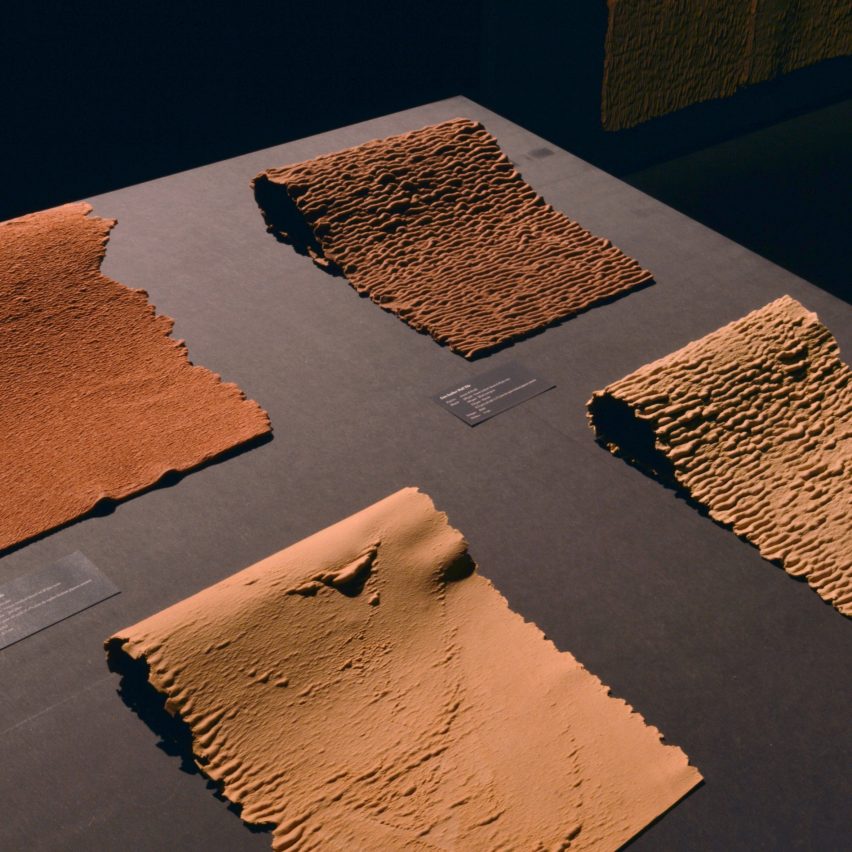
To highlight sustainable and ethical substitutes for animal leather we've rounded up six materials that can rival its textural and performance qualities, from vegan pineapple leather to a leather alternative made of seafood shells.
Leather and fur have long epitomised luxury in the worlds of fashion, accessories and furniture. But recently, popular opinion has started to shift with growing awareness about the cruelty of mass livestock rearing and the number of resources consumed and carbon emitted in the process.
In response, major fashion houses including Gucci, Burberry, Ralph Lauren and Vivienne Westwood have decided to ditch fur. 2018 marked the first time the material wasn't used by a single designer on the London Fashion Week line-up.
The response to leather has been slower, even though it involves a slew of chemicals such as formaldehyde, cyanide and chromium in the process of tanning and dyeing, which can be hazardous to both people and the environment.
According to a poll by market research company Morning Consult, more than a third of people in the UK and 23 per cent of people in the US think that leather is an inappropriate material to use in clothing.
But so far, most luxury brands, such as Chanel, Prada and Versace have only chosen to ban leather derived from certain exotic animals such as crocodiles, snakes and kangaroos.
That's why a cohort of young, independent designers and material research startups are hoping to fast track the move away from animal leather by developing convincing alternatives that don't resort to common polluting, petroleum-based plastics such as polyurethane (PU) or polyvinyl chloride (PVC).
Below, we've rounded up six of these novel materials, which are hoping to give leather the boot.
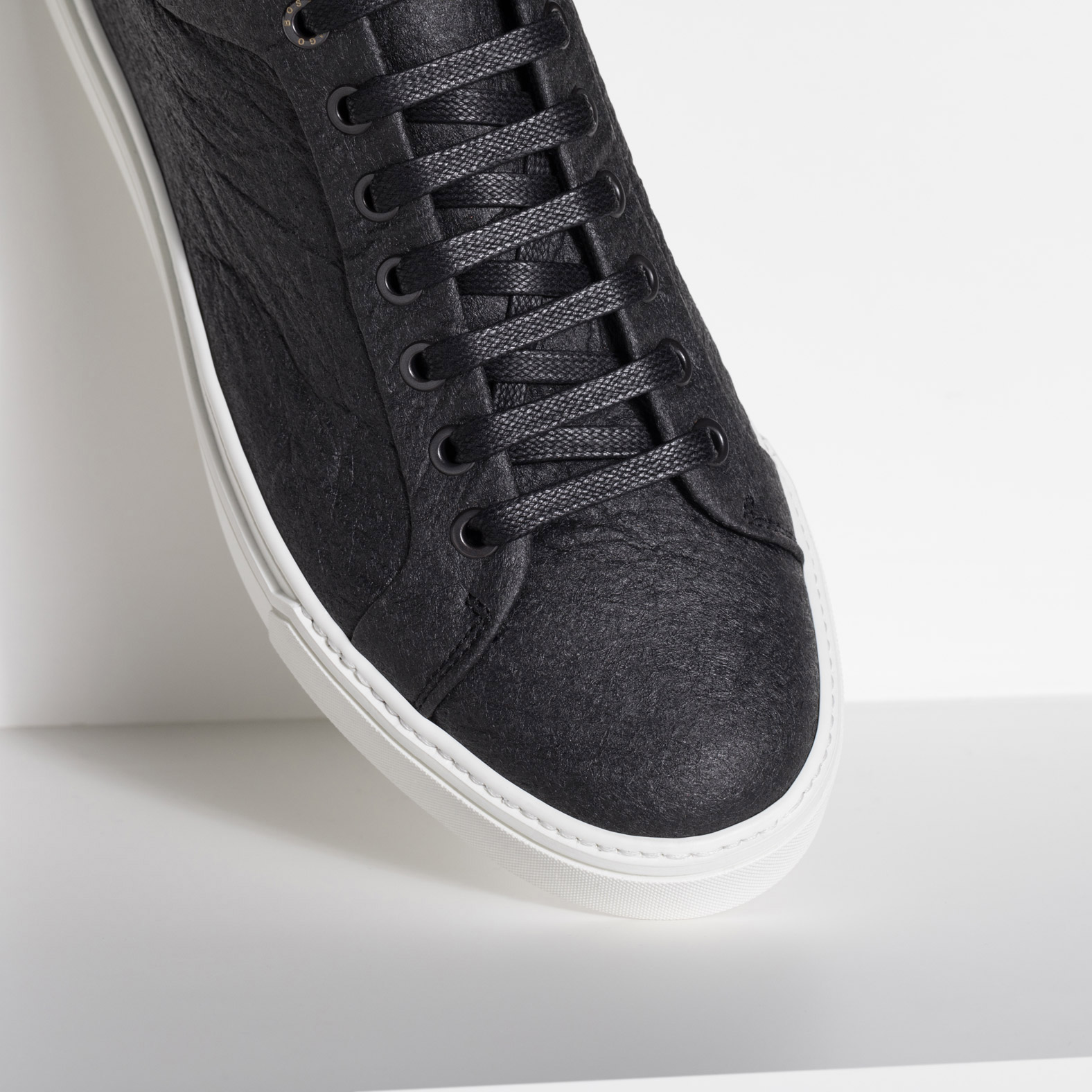
British materials company Ananas Anam, which was set up in 2013, was among the first to come out with a plant-based leather alternative
Called Piñatex, the material makes use of fibres derived from pineapple leaves, which are sourced from a plantation in the Philippines where they would otherwise be burned or left to rot.
These fibres are then mixed with polylactic acid (PLA), a bioplastic derived from corn, before being formed into a non-woven mesh, finished and coated to create a flexible yet durable material.
While many plant-based leather alternatives are still in the prototype phase, Piñatex has already been fashioned into commercially available products by the likes of Hugo Boss and US brand Native Shoes.
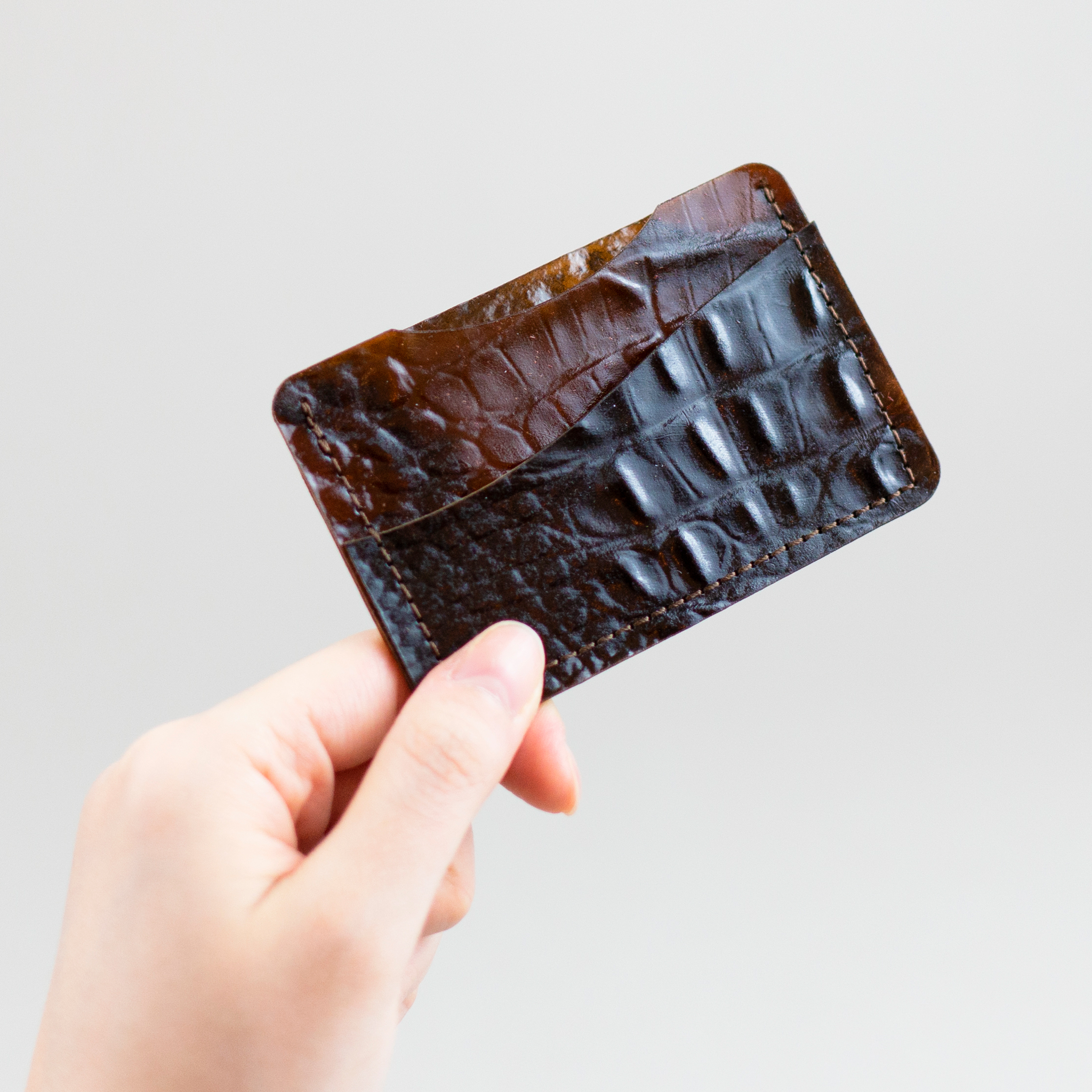
From snakeskin to crocodile hide, the Tômtex material by Vietnamese designer Uyen Tran can be embossed to replicate a menagerie's worth of different animal leathers.
Tômtex is made from waste coffee grounds and the biopolymer chitin, which is found in the exoskeleton of crustaceans and in this case is sourced from discarded seafood shells.
Although not vegan, the flexible yet durable material makes use of the roughly eight million tonnes of shells that are thrown away by the global food industry every year.
"The world is running out of raw materials, so I want to repurpose these wastes into a new, accessible bio-material for everyday life," Tran told Dezeen.
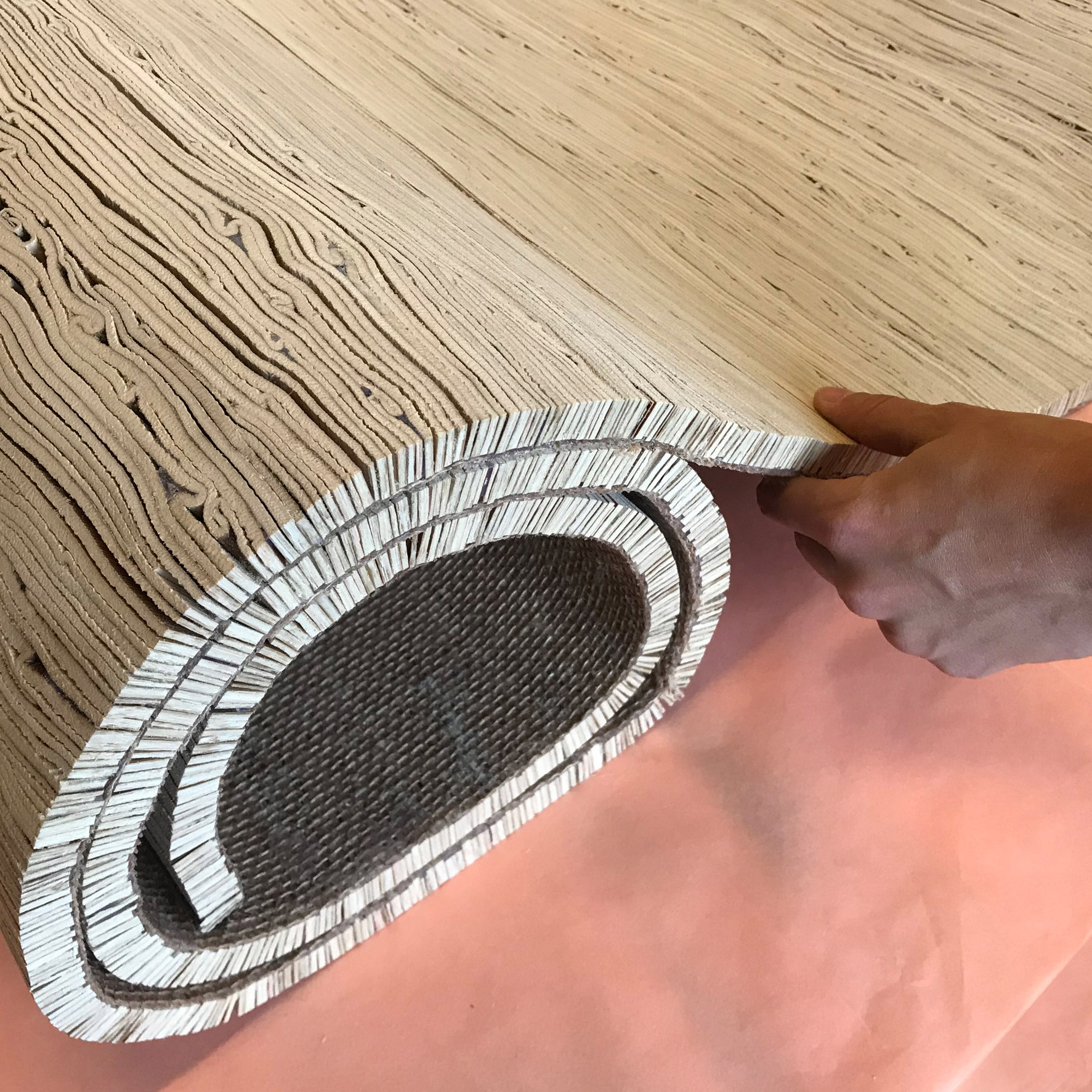
Palm leather by Tjeerd Veenhoven
Dutch designer Tjeerd Veenhoven turned to plant fibre to create his vegan leather, much like Piñatex, although opting to source it from the leaves of the areca palm instead of from pineapples.
The material, which is initially brittle, is submerged in a softening solution for multiple days until it becomes pliable.
This solution consists exclusively of non-toxic ingredients that have been labelled fit for human consumption, including glycerin and water.
Veenhoven has fashioned the resulting material into everything from bags and book sleeves to shoe soles and rugs, with undulating palm leather strips attached to a woven base.
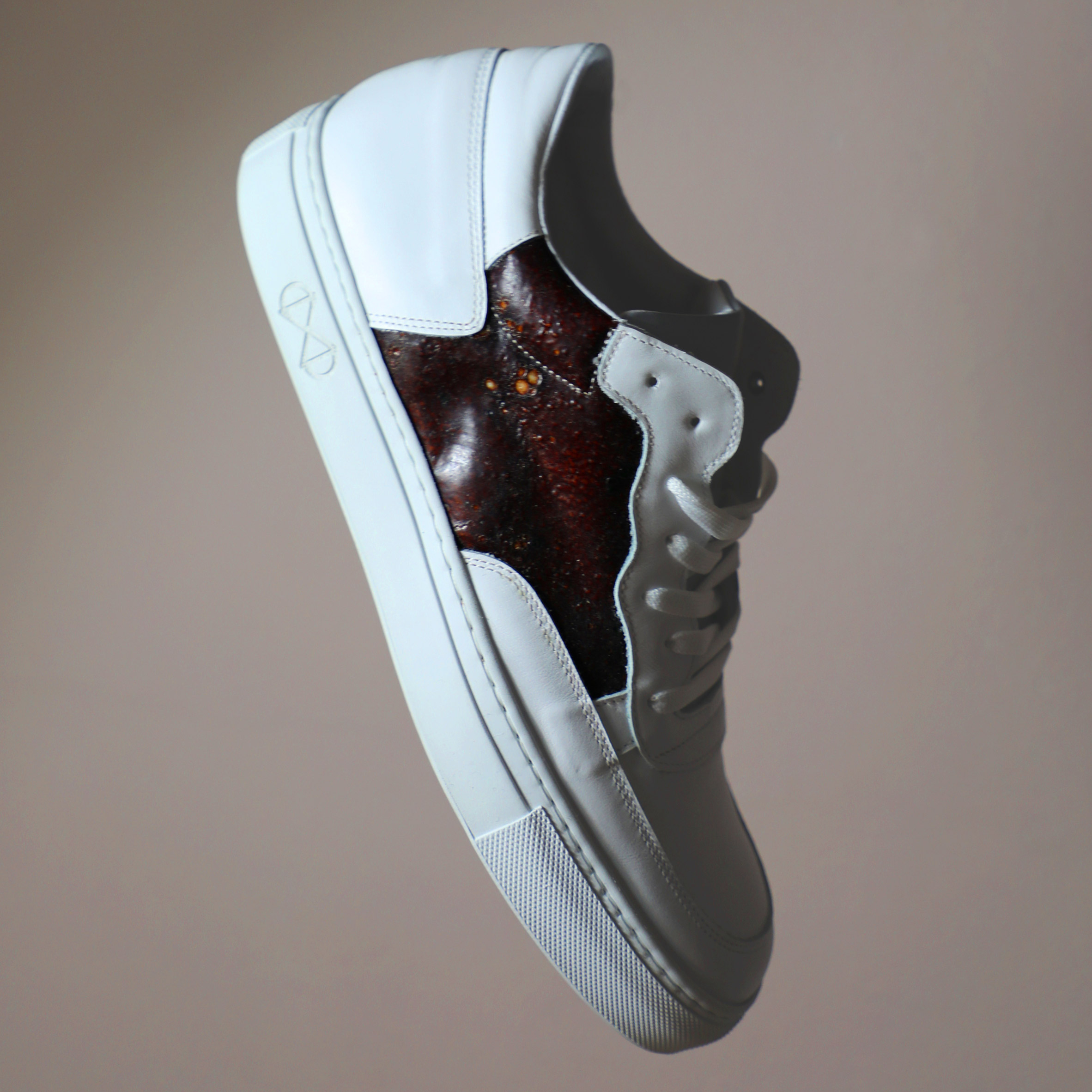
Discarded animal fat and bones from a slaughterhouse are tinted and plasticised using waste blood to create Israeli designer Shahar Livne's bio-leather.
The material can be moulded or 3D printed and has already been integrated into a pair of trainers, designed by Livne in collaboration with German footwear brand Nat-2.
Although the material is so far only viable for use in a small, deep red panel, the designer hopes to develop the material so that it can be used to create the entire shoe.
"This bio-leather offers a new, out-of-the-box possibility that utilises animal by-products that are low in cost and pollution, and that mitigate the amount of waste created by meat-production industries," she told Dezeen.
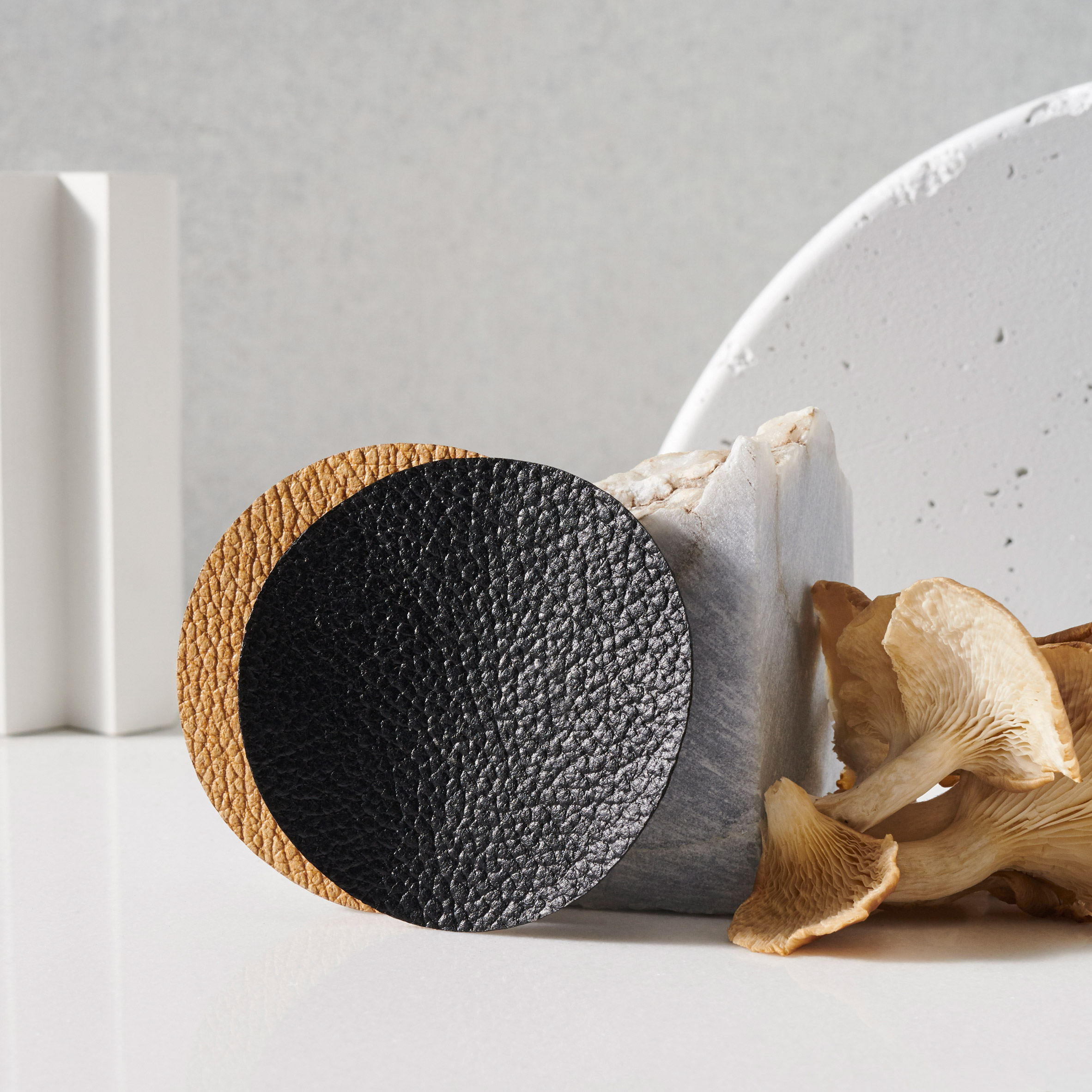
The first bio-based leather alternative that looks set to go mainstream is Mylo by US biotechnology company Bolt Threads.
Created from mycelium, the branching filament structure that mushrooms and other fungi use to grow, the material reportedly consumes substantially less water than is needed to produce animal leather while emitting fewer greenhouse gases.
Major luxury fashion houses including Stella McCartney, Adidas and Gucci parent company Kering have invested in upscaling the production of the material and are set to release the first mass-market products made from Mylo next year.
Elsewhere, Finnish studio Aivan has used a mycelium-based leather to cover the ear pads of its Korvaa headphones, which are entirely made of materials grown by live microbes.
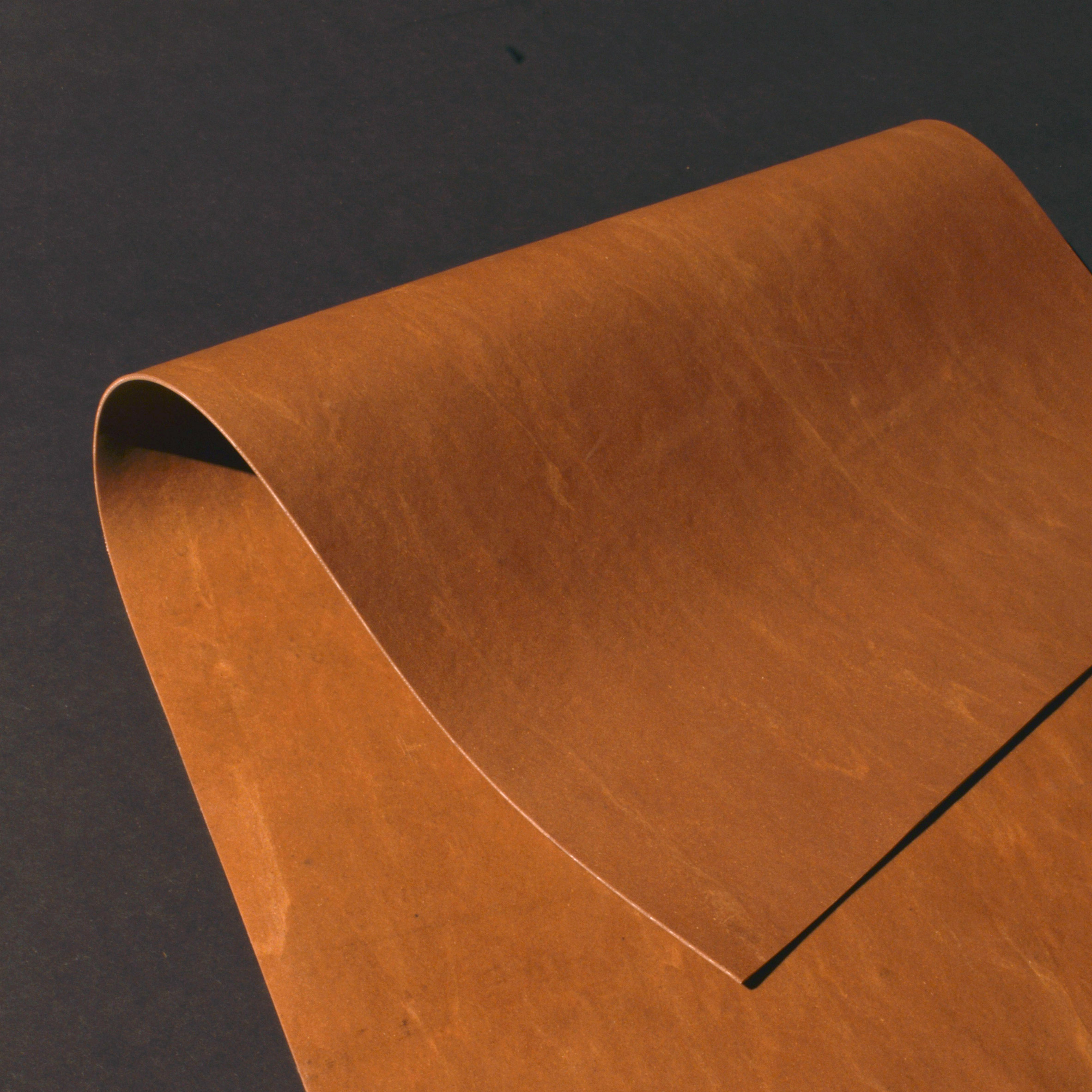
Over a series of material experiments, Eindhoven graduate Don Kwaning has adapted linoleum, which is commonly used as flooring, into various different leathers (top).
A thicker version mimics the textured, wrinkly finish of rumen leather, which is made of cattle stomach, while a thinner one approximates the soft exterior and flexibility of more commercial varieties.
"It is a material with great future potential," Kwaning told Dezeen. "Many people don't even know it's made from only natural materials."
In fact, although it resembles plastic, linoleum actually consists of linseed oil mixed with a filler such as powdered cork, which is applied to a cloth backing and left to harden.
The post Six alternatives to animal leather made from plants and food waste appeared first on Dezeen.
from Dezeen https://ift.tt/3lPo2fu
No comments:
Post a Comment